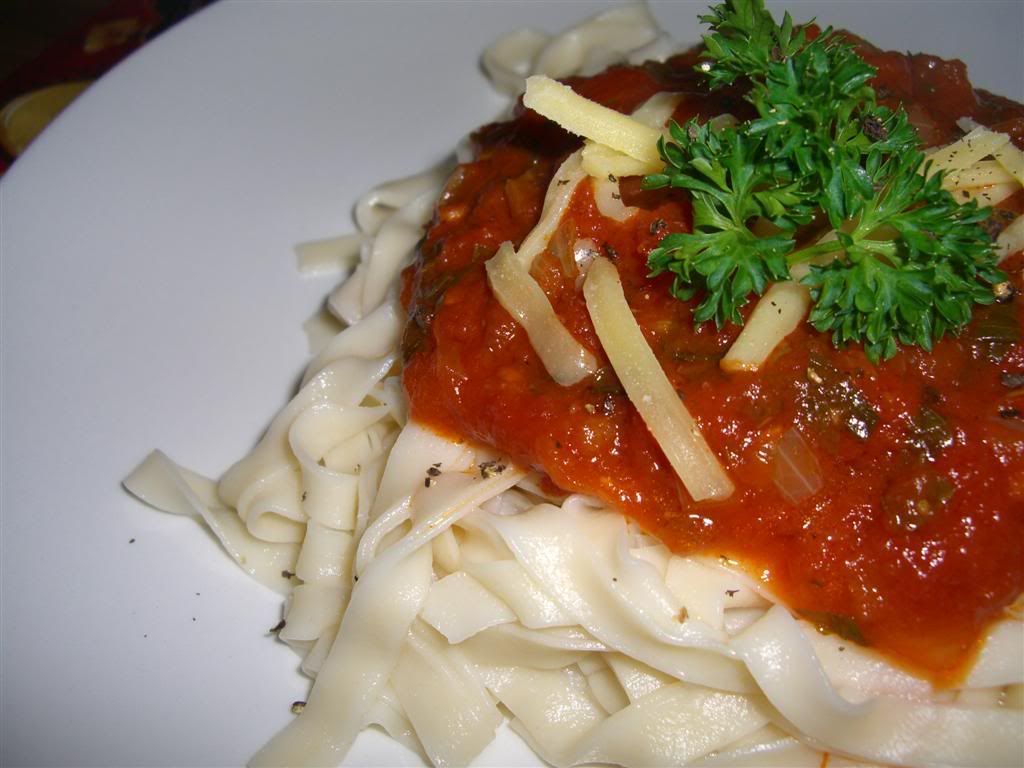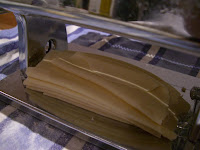Fresh Pasta
Making fresh pasta is a wonderful undertaking. If you have time to spare, I highly recommend that you do. Just like cooking or baking, doing so creates a basic awareness of what goes into your food, particularly what goes ‘into your pasta!’.
The dough is very basic. It is composed of flour, eggs, oil and some water (as needed, if the dough tends to be too dry, which, depending on which hemisphere of the world you live in, would ofcourse vary due to humidity).
The question perhaps is what kind of flour, how big the egg, what oil, and what is the proportion!
Thus is the premise of knowing what goes into your pasta!
There are a lot of fresh pasta recipes out there but what was heeded in this one was from the book The Fine Art of Italian Cooking by Giuliano Bugialli. Some other recipes call for additional egg yolks, which probably makes the pasta 'thicker' or 'richer' in taste.
The flour used in this instance is the TIPO 00 (‘type double zero’), which is the Italian standard of the fineness of the flour (or the setting of the millstone). TIPO 00 is highly refined, TIPO 0 would be less refined, and so on, until TIPO 2, which is then dark and coarse.
The egg is supposed to be extra large. One egg goes to every cup of flour, and one teaspoon of (extra virgin) olive oil (or any other oil that would have no strong taste, unless you want that sort of flavored pasta).
Water is added depending on how much liquid the flour absorbs. The dough should not be sticky, and once kneaded and it has come together, may be cut into smaller parts (sometimes equal to the number of eggs used in the dough), before being rolled into the pasta machine.
After a first pass, fold the dough into three, before passing it again. The setting should be “1” as the thickest. After this there is no need to fold it again and again (unless the shape is completely irregular!) and continue passing on through the pasta machine moving the settings from “2”, onwards, until the desired thickness (or thinness!) is achieved.
Fresh pasta is also easier to cook, just around 2-3 minutes in rolling boiling water. But it does take some time to knead and roll and dry the cut pasta! However fresh pasta can be stored in the fridge, just ensure a healthy sprinkling of flour to make sure the strands don't stick together.The pasta may be cut using the thicker cutter (with wider teeth( for a tagliatelle (otherwise known as fettuccine). For a taglierini the pasta may be cut using the narrower teeth of the machine.
The Sauce
Probably one of the best possible accompaniments for the fresh pasta is a homestyle version of tomato Sauce. Very basic ingredients – tinned tomatoes, finely chopped onions, garlic, chili, fresh basil, fresh oregano, red wine vinegar, pinch of sugar, salt, pepper and extra virgin olive oil to taste. Let simmer, and reduce for richer flavor. Top pasta with sauce, sprinkle with cheese, and a little sprig parsley





0 comments:
Post a Comment